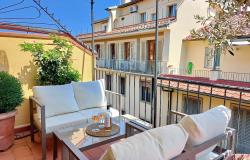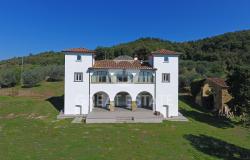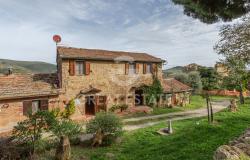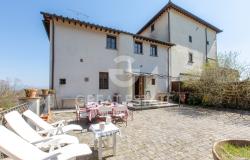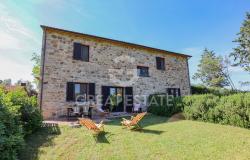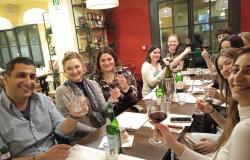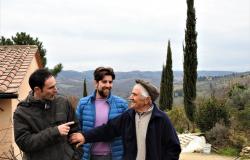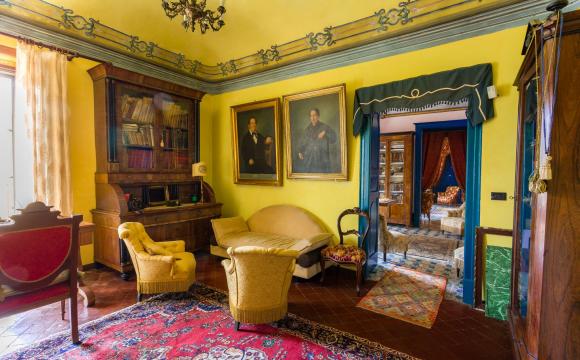Words by Carla Passino
He is better known for sexy, slinky dresses, racy, figure-hugging trousers and eye-catching textile prints. But Roberto Cavalli, Florence’s least understated fashion designer, is also a winemaker. Or rather his son, Tommaso, is. And the third vintage of Tommaso’s vinous labour, an international red of intense bouquet and flavour, hits the shops in the next few days.
A smooth, powerful IGT Toscana, Cavalli Tenuta degli Dei is a new wine with an old history. Cavalli senior has a profound passion for the Tuscan countryside, and thirty years ago, he purchased an estate in the Chianti heaven of Panzano, close to the Romanesque parish church of San Leolino. The land came with a small vineyard but no one did much with it—until 2000, when the young Cavalli, who had by then moved to live on the family farm, decided that, after setting up a successful stud, he wanted to diversify into winemaking.
“I have been living in Panzano in Chianti since 1989, but the link with this land harks back to my childhood,” says Cavalli. “I came here with my father whenever possible, and it is on this hills that I learned how to ride. I can’t imagine my life without horses and vineyards, just as I can’t imagine it far from this nature.”
Of course, the beginnings were hard—full of meetings, tractors, long hours on the field but also enthusiasm and ideas. The estate’s original vineyard was tiny and neglected, so Cavalli junior decided to replant it. He selected a sunny, south facing plot of three and a half free-draining, mineral-rich acres situated some 400 to 450 metres above sea level. Then, supported by oenologist Carlo Ferrini, he took the shocking decision to plant them with international varieties—Merlot, Cabernet Franc, Cabernet Sauvignon, Petit Verdot e Alicante Bouchet—rather than the traditional Sangiovese grape that is the mainstay of the Chianti Classico wine produced in the Panzano area. “Doing things differently is in my family’s DNA,” jokes Cavalli. “This is one of the reasons that convinced us not to make Chianti Classico, and not to plant Sangiovese. And while this is partly out of respect for the many producers who make splendid examples of Chianti Classico here in Panzano, I have to admit it also stems from a desire to make our vineyard ‘speak’ a truly cosmopolitan language, where each grape variety can make a contribution to create a unique mélange of scents, aromas and flavours. It’s nothing to do with the fashion or the so-called ‘international taste’ for wine—it is simply the search for a wine with a great personality.”
“Doing things differently is in my family’s DNA,” jokes Cavalli. “This is one of the reasons that convinced us not to make Chianti Classico, and not to plant Sangiovese. And while this is partly out of respect for the many producers who make splendid examples of Chianti Classico here in Panzano, I have to admit it also stems from a desire to make our vineyard ‘speak’ a truly cosmopolitan language, where each grape variety can make a contribution to create a unique mélange of scents, aromas and flavours. It’s nothing to do with the fashion or the so-called ‘international taste’ for wine—it is simply the search for a wine with a great personality.”
Cavalli then chose to plant another three and a half acres just outside his father’s villa on the Florentine hills. The double location has caused some practical complications—harvest time is different for the two vineyards, and the grapes’ journey from the Florentine plot to the cellars in Panzano needs to take place in small, refrigerated vans to prevent a spontaneous fermentation taking place—but worthwhile.
That’s because the second vineyard has a completely different combination of soil and climate—warmer and less damp than the Chianti, with a strong clay element—ensuring the grapes here complement the ones from Panzano. Across both locations, yields are deliberately kept at about one kilo per vine, and the fruit is carefully selected to ensure only the best makes it into the vats. Later, malolactic fermentation and ageing take place in French oak (both new and not). After 14 months, the wine is blended.
Across both locations, yields are deliberately kept at about one kilo per vine, and the fruit is carefully selected to ensure only the best makes it into the vats. Later, malolactic fermentation and ageing take place in French oak (both new and not). After 14 months, the wine is blended.
“This is a magic moment, a bit like foaling or presenting a new fashion collection,” says Cavalli. “The different characteristics of each variety and vineyard create, like a fine mosaic, the wine’s character.”
The vinous blend is aged in oak for four to six months, then in the bottle for another year. The end result is a rich, complex wine of great power and longevity, rich in fruit, with hints of aromatic herbs and balsamic overtones.
Oh and it gets dressed up for the part by none other than Roberto Cavalli himself. The designer chooses patterns from his textile collection to create the labels—the 2006 vintage, which goes on sale now, has a delicate butterfly - and has even designed a special bronze and rhinestone logo for the limited edition Cavalli Collection bottles. Made by the same artisans that create the accessories for the fashion line, the logo graces a slick black glass bottle with a snake etching, all wrapped in a beautiful black leather case. Very Cavalli indeed.

